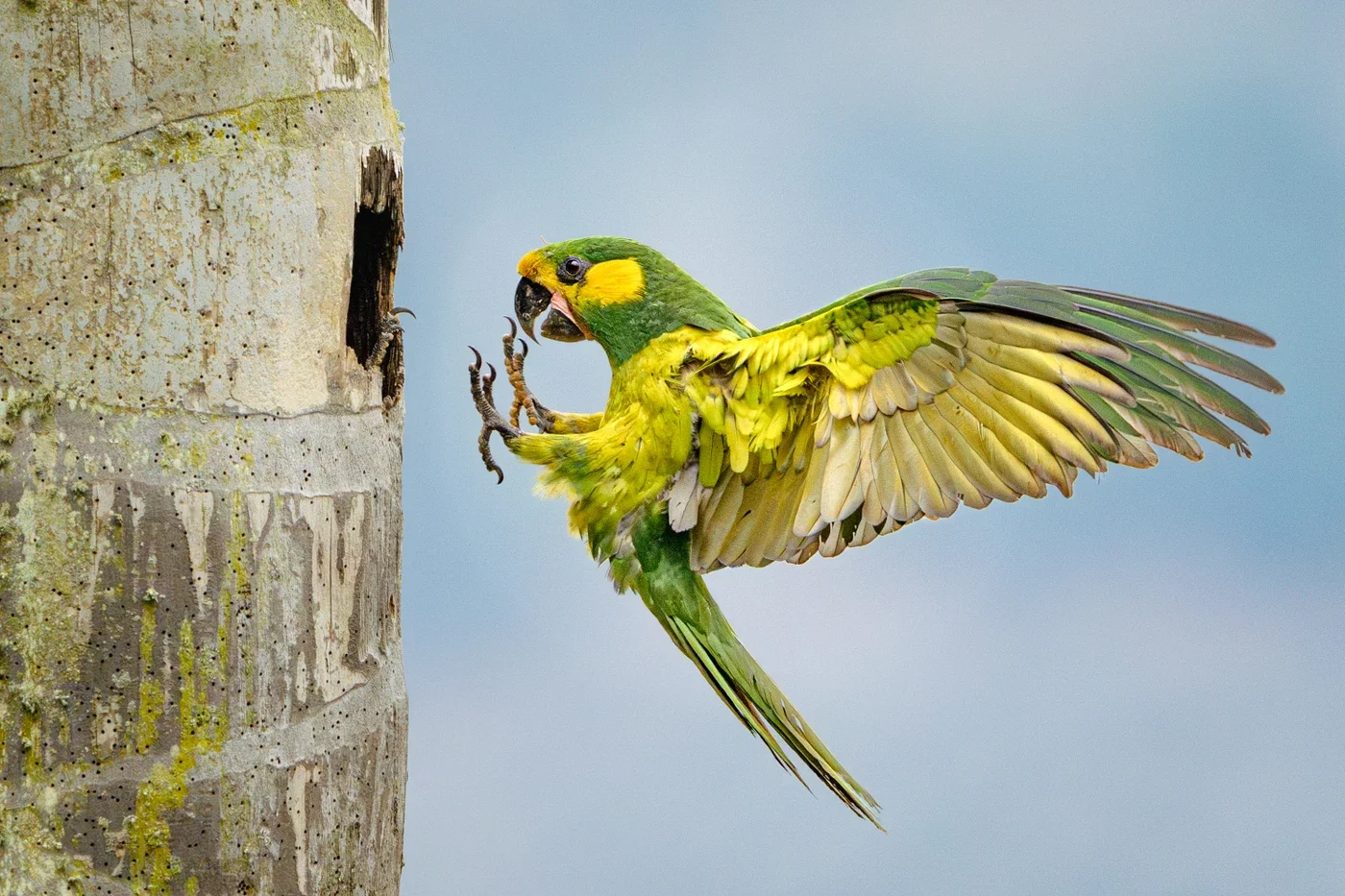Photo: Yellow-eared Parrot, León Felipe Jimenez/Audubon Photography Awards
Connie Ericson
One of the perks of editing the Potomac Flier is access to National Audubon Society’s photo archive, which includes years’ worth of images from the photography awards. Every month I browse the archive for photos to illustrate the articles, one of the best parts of this job. I’m not a photographer myself, but I appreciate the artistry and dedication required to produce the stunning images. Take a few minutes today to review this year's "top 100" photographs, including the winners and honorable mentions.
Yellow-eared Parrot, León Felipe Jimenez/Audubon Photography Awards
I always try to pick a “favorite” photo from the array, a ridiculous exercise because I end up with so many favorites. But from this year’s contest I thought I would feature León Felipe Jimenez’s Yellow-eared Parrot, a photograph from the entries from photographers in Chile and Colombia, a new category in the annual competition. I picked it for several reasons:
It’s noteworthy that the photo is from the contest’s new category, which highlights the importance of conservation across the American hemispheres. Conservation of the birds we see in North America relies on efforts in both hemispheres because of seasonal migration.
The photo captures movement and tells a story. One of a pair is returning to the nest for the night, and you can pick out just one claw from the other bird, already in the nest.
The photo also highlights an important conservation lesson about habitat. The photographer explains that the birds nest almost exclusively in dead wax palms, Colombia’s national tree. That habitat is at risk from deforestation, monoculture plantations, and cattle ranching, making the work of farmers who protect these palms essential.
Of course, it’s also impossible not to recognize the clarity of the image and the beauty of the bird.
There are many ways people come to bird photography. Some photographers start out photographing landscapes and then start focusing on the landscape’s inhabitants. Many a birdwatcher started out as a photographer, and some birdwatchers gravitate to photography to help identify a bird they see in the field but can’t yet identify. A good image, downloaded and magnified on a computer screen, can show features with clarity that binoculars may not always provide. Photographs also help citizen science records, verifying the identification of a bird, particularly if it’s reported as a rarity in an area. And some birdwatchers enjoy keeping track not just of the birds they have seen, but the birds they have photographed. If you’re interested in starting to photograph birds, or increase your skills, you can check out tips and recommendations from National Audubon's website.
Before leaving this subject, I also want to acknowledge the efforts of our local photographers. Many of the photographs in this monthly newsletter and most of the photographs from our annual report come from local photographers who generously allow us to use them. And, if you haven’t looked at our monthly columns yet, take a few moments to review the helpful photographs of native plants featured in the Wildlife Sanctuary Almanac and the unbelievably detailed photographs of insects that Judy Gallagher includes in her column, A Closer Look: Nature All Around Us.

